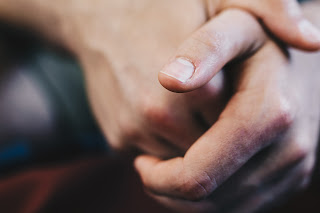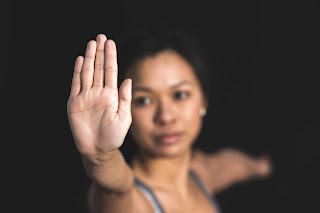The effect the different kind of touch can have on our senses and sense of wellbeing
The effect the different kind of touch can have on our senses and sense of wellbeing
What are the different types of touch, what do they mean and when may they be used?
Did you know that there are 7 different styles of touch and they are as follows:
So, what do each of these forms of touching actually mean and when may you see these forms of touch being given and received?
Positive touch is used to communicate positive emotions between two people and often occurs between couples or those within a close relationship. For example, holding your partners hand whilst out walking in the park or friends giving each other a hug when they meet to have dinner at a restaurant. It is a way of showing their partner or friend that they are loved, important and cared for and this will be the message that will be conveyed and received.
Positive touch can also be classified even further into the following categories:
Support : this form of touch is used to reassure and nurture those who may be in need of it, an unspoken promise to look out for and protect. For example, at the scene of an accident there may be two female friends, Natasha and Irene. Natasha tripped over uneven paving and hit her head and is laying on the ground unconscious and her friend Irene is visibly upset and panicking. A kind-hearted person passing by may stop to comfort and calm Irene, by gently rubbing her back, whilst calling for medical help and monitoring her unconscious friend Natasha whilst holding her hand. Therefore, support touch is given in situations from one person to another or in this case two, to show concern, where distress is evident and touch is virtually required.
Appreciation: this form of touch is used to show gratitude for something another person has done for you. For example, a friend may offer to pick your child up from school and when she drops her off you may give your friend a gentle touch on the arm whilst saying thank you in appreciation.
Inclusion: this form of touch is to give the impression of being together, suggesting psychological closeness and a perceived sense of connection. For example a group of friends may be out having dinner together ,then decide to take a photograph at which point they will naturally move closer together because they wish to convey warmth towards each other and a sense of connection and belonging which will give the impression to others of closeness between them.
Sexual interest or intent: this form of touch is used to express and demonstrate sexual interest or physical desire. It can often be seen between couples who have a strong sense of chemistry between them, there may be prolonged eye contact, heightened breathing or erotic touching between them when they are together.
Affection: this form of touch is used to express a generalised positive regard which goes beyond just simple acknowledgement. For example a man may be introducing his girlfriend to his parents for the first time and upon greeting they may give her a hug or touch her arm to make her feel safe and welcomed. The man may then also gently give her a side hug or gentle touch on her back to reassure her that he cares for her and is there to support her.
Playful touch is used to lighten interaction and connection and not make it seem so serious. It can however have two separate meanings as it always involves a signal that means ‘play ‘which can be either verbal or non-verbal and conveys the message that the behaviour is not to be taken too seriously. This can be further classified as playful affection which is when the intervention and connection is lightened and the serious tone of the positive message being conveyed is lessened by the play signal being demonstrated. This can be experienced as teasing which is generally mutual between both parties.
Playful aggression is similar as it is also used to lighten the connection and again not make it seem as serious, but this time the play signal indicates aggression where touch is now initiated by one person as opposed being mutual.
For example, a couple may meet in a bar. The woman may approach the man and start to flirt with him by touching his chest whilst smiling seductively and he reciprocates back to her the same playful touch, this is affectionate playful touch, the man may then respond further by trying to wrestle with the woman in a light-hearted way, this is known as aggressive playful touch. Another example is a brother and sister play fighting together initially in playful affection until he then starts to tickle his sister and it becomes playful aggression touch. A further example is curbing an aggressive verbal comment with a reassuring touch such as a man complaining to his wife that the house is untidy whilst at the same time gently touching her arm to lessen the affect of the comment and so she doesn’t take it so personally.
Control touch is used in response to a form of direct behaviour, an attitude or feeling the state of the recipient. The main feature is that almost all forms of control touch are initiated by the person who is attempting to influence such as a traffic warden placing a ticket into the hand of a car owner who is parked inappropriately. Control touch can be further classified into compliance touch which is when the person initiating attempts to direct the behaviour of the other person, which they may do by implying they have done something to influence the attitudes or feelings of those involved.
Attention getting touch is used to direct the touch so that the receivers perception is focussed towards something in particular and announcing a response touch which is when attention is brought to highlight how the initiator is feeling, which in turn then results in the receiver giving a response.
Ritual touch or Ritualistic is the touch used when greeting or departing from another person or people, for example greeting touch is the act of acknowledging another person when you first meet them and departure touch is as it suggests the act of closing the encounter of meeting.
Greetings and departure touch can be experienced as a handshake or hug depending on how casual or formal the encounter is and how well known to you the person or people in question is or are.
Hybrid touch is a mixed touch and can be a more in-depth version of touch which combines two or more meanings for the intention of the touch and the reasons for what it is done. It can be classified as greeting and affection touch which is when you express affection and acknowledgement of the initiation or an encounter or departure and affection touch when you express affection and is used to conclude an encounter. A simple example is feeling happy and excited to meet a friend and conveying that sensation as you hug them to say hello and then goodbye following the encounter.
Task related touch is touch that is directly associated with the performance of a task. It can be classified further as reference to appearance touch, instrumental ancillary touch or instrumental intrinsic touch. Reference appearance touch is when you point out or inspect an artefact or body part verbally that is based solely on the appearance of that object or person. Instrumental ancillary touch is touch that occurs as an unnecessary part of the accomplishment of a task. Instrumental intrinsic touch is touch used to accomplish a task in and out of itself for example to give someone help.
Accidental touch is as it suggests not intended or deliberate and therefore perceived as unintentional with no meaning as to the reason for it occurring and happening. There are numerous examples such as you are out shopping in the supermarket and you accidently brush past someone in the aisle as you pass by , or you may be in a shop and accidently bump into them whilst looking at something or you may be standing on a busy bus or tube and at the next stop more people may get on causing you to get pushed forward and then accidentally to come into contact with another person as there is not enough space. The accidental touch affect is when you actively touch another person from behind although the touch was not meant to happen the person receiving it nevertheless feels uncomfortable about receiving it.
Elizabeth Lock Professional Holistic and Cuddle Therapist CTHA
heal@yourinnerglow.co.uk https:// yourinnerglow.co.uk
heal@yourcuddletherapy.co.uk https:// yourcuddletherapy.co.uk




Comments
Post a Comment